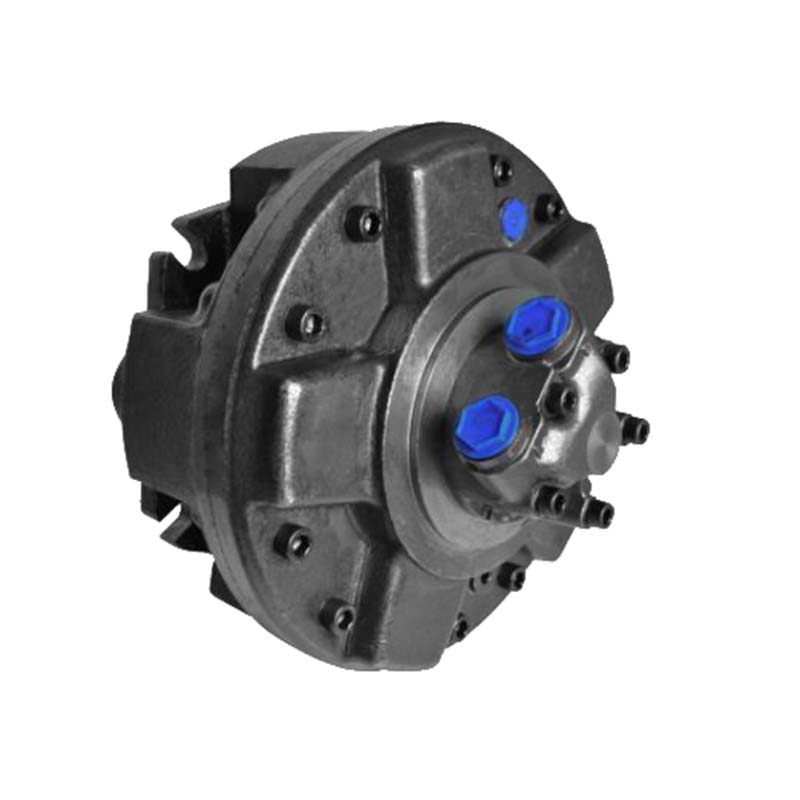Interchangeability of Hydraulic Motors and Hydraulic Pumps
hydraulic motors and hydraulic pumps are both essential components in hydraulic systems, utilizing the pressure and flow of hydraulic fluid to transmit power. However, they differ in their working principles and structures, making them not entirely interchangeable.
Working Principle Differences
Hydraulic pumps operate by converting mechanical energy into hydraulic energy. This involves the rotation of a prime mover, such as an electric motor or internal combustion engine, driving the pump's vanes or pistons to draw low-pressure hydraulic fluid into the pump and discharge it into the hydraulic system at higher pressure.
Hydraulic motors, on the other hand, convert hydraulic energy into mechanical energy. They utilize high-pressure hydraulic fluid to drive internal vanes or pistons, generating torque and rotational speed.
In essence, hydraulic pumps "create" pressure, while hydraulic motors "utilize" it.
Structural Differences
Hydraulic pumps typically have a more complex structure compared to hydraulic motors, as they must withstand higher pressures and flows. Common hydraulic pump types include Gear Pumps, Vane Pumps, and piston pumps.
Hydraulic motors have a relatively simpler structure, primarily responsible for converting hydraulic energy into mechanical energy. Common hydraulic motor types include gear motors, vane motors, and piston motors.
Generally, hydraulic pumps exhibit a more robust and durable structure, while hydraulic motors are more lightweight and flexible.
Interchangeability Analysis
Based on the above analysis, hydraulic motors and hydraulic pumps cannot be fully interchangeable due to their differences in working principles and structures. In specific scenarios, hydraulic motors can be used as substitutes for hydraulic pumps:
When the system's pressure requirements are low, such as auxiliary power units in low-pressure Hydraulic Systems.
When the system's flow requirements are low, such as power units in small hydraulic systems.
When space constraints exist within the system, as hydraulic motors have a more compact structure.
However, hydraulic motors cannot replace hydraulic pumps in the following situations:
When the system's pressure requirements are high, such as primary power units in high-pressure hydraulic systems.
When the system's flow requirements are high, such as power units in large hydraulic systems.
When the system demands continuous operation over extended periods, as hydraulic motors have a relatively weaker structure.
In summary, the interchangeability of hydraulic motors and hydraulic pumps depends on the specific requirements of the application. When selecting hydraulic components, careful consideration of the system's specific needs is crucial.
Conclusion
Hydraulic motors and hydraulic pumps play vital roles in hydraulic systems, both utilizing hydraulic fluid's pressure and flow to transmit power. Nevertheless, their distinct working principles and structures limit their interchangeability. Selecting the appropriate hydraulic components requires a thorough assessment of the system's specific demands.
Saivs brand
- Tyre Changer
- ordinary hydraulic winch
- Counterbalance Valves CBBA
- SL6 SL10 Rexroth Check valves pilot operated
- Gm7 series low speed rpm high torque hydraulic radial piston motor
- Single drum 10000/11000/12000 lbs pounds 5T 5000kg hydraulic winch
- Two Way Two Position Normally Closed SV10-20M
- Little King Kong Electric Pollet Truck
- A10VSO/31 Rexroth Hydraulic pump
- 5/8/10/15/20/25/30/50 tons used capstan winches
Related News
- Hydraulic Winches: Working Principle Advantages and Comparison with Electric Winches
- Development and Application of Hydraulic Motors
- Selecting the Right Material for Your Hydraulic Cylinder
- Gear Pump Selection Principles and Basic Conditions
- Top 5 Construction Heavy Machines Prone to Hydraulic Cylinder Failure
